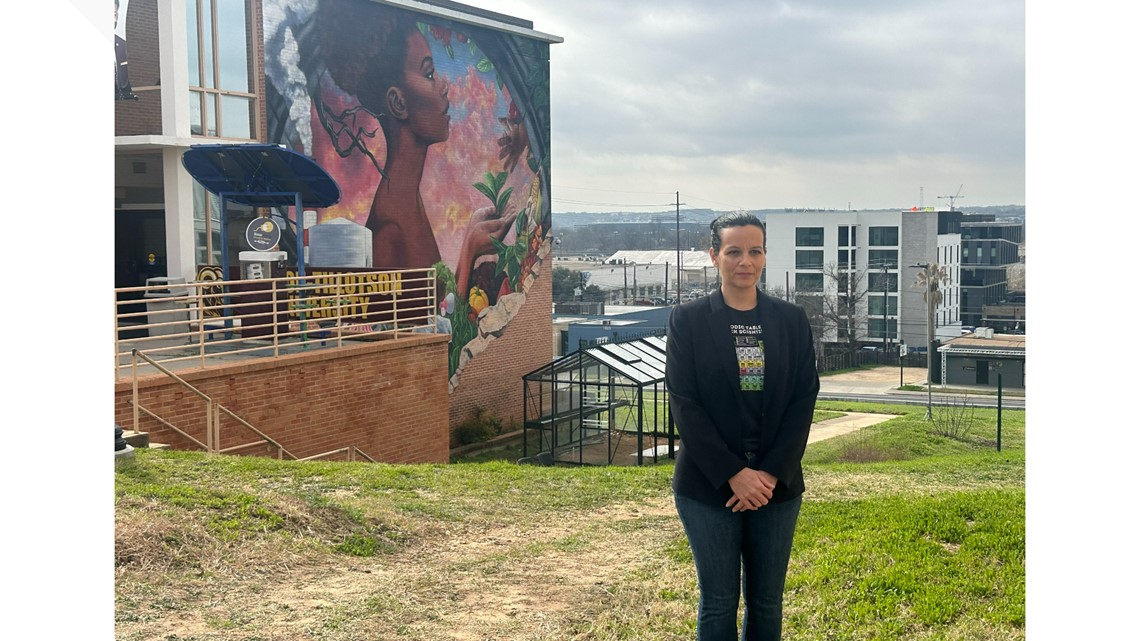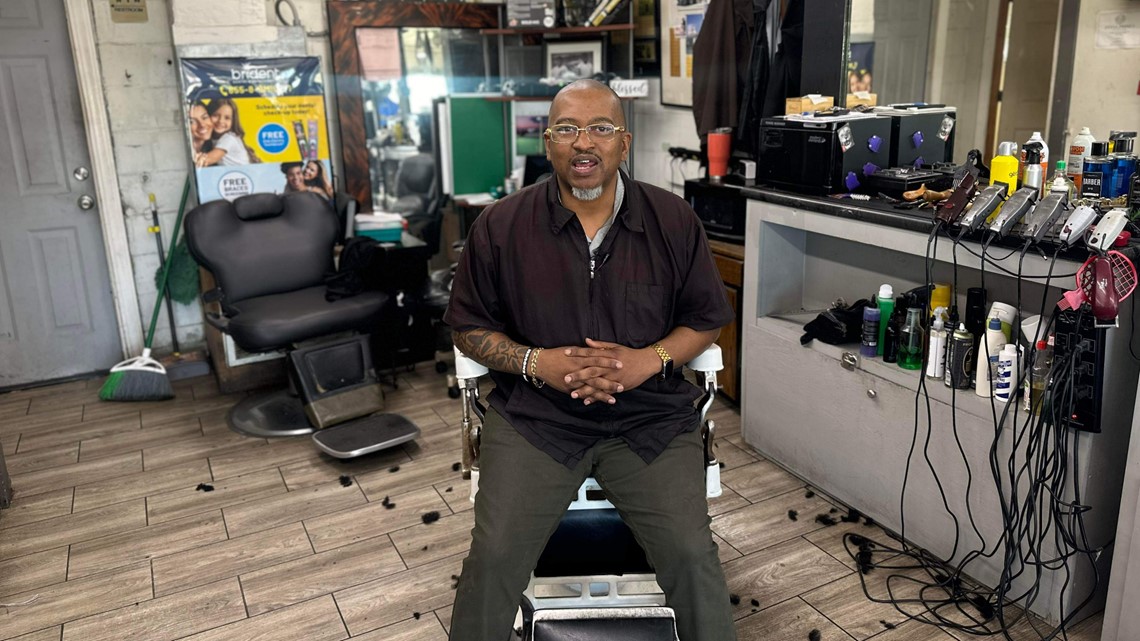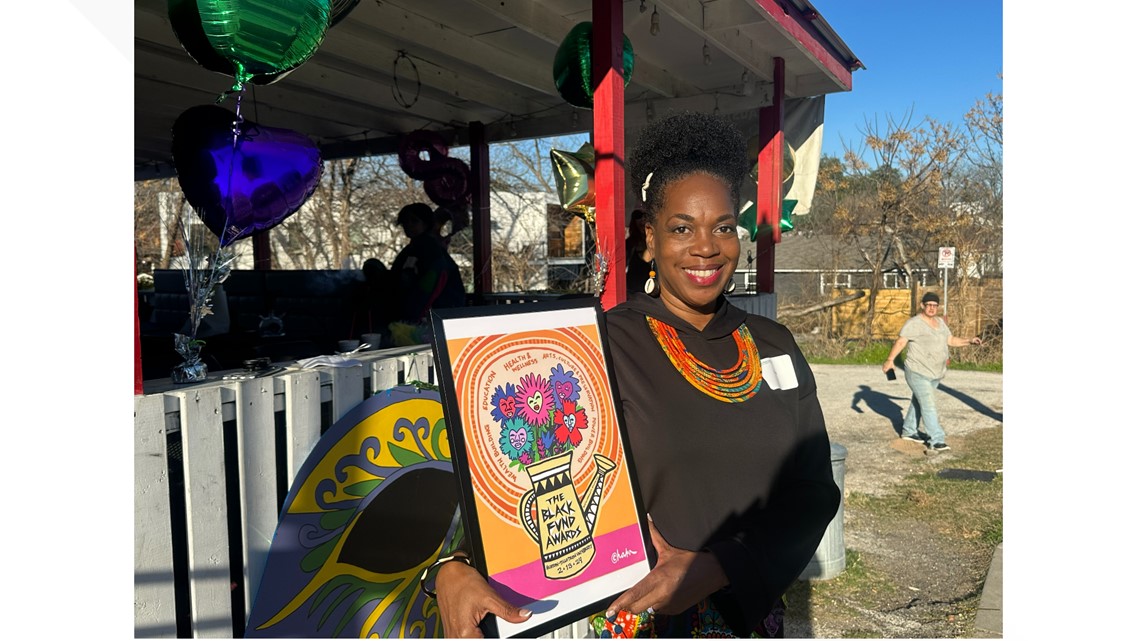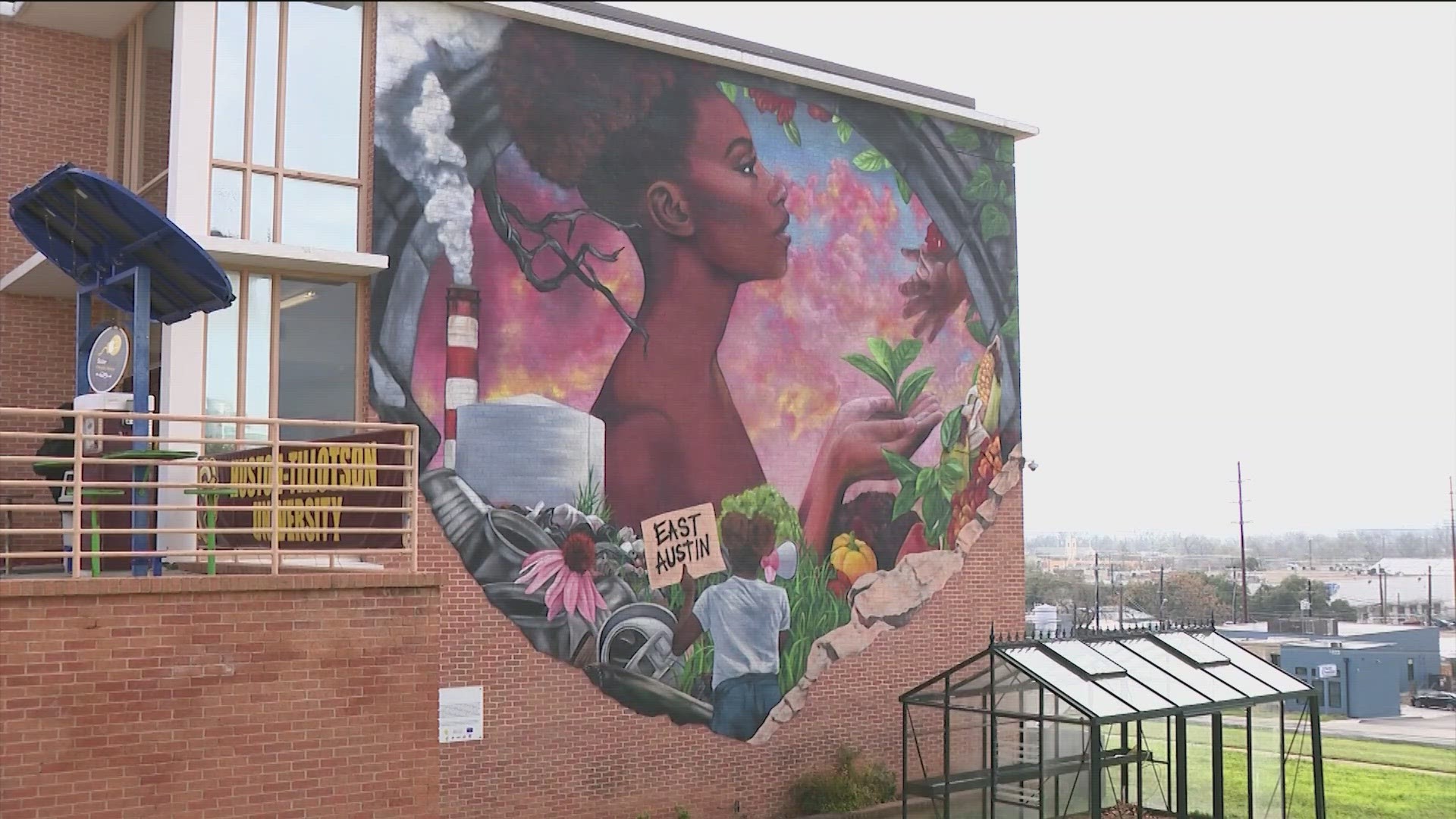AUSTIN, Texas — It wouldn't be Black History Month without taking a look at East Austin, a community that was once predominantly Black but now looks very different due to years of gentrification.
According to recent census numbers, less than 10% of Austin's population is Black – a number that has been in steady decline for years now.
Dr. Amanda Masino teaches biology at Huston-Tillotson University, located on Chicon Street in East Austin. She has extensively researched the gentrification happening in the surrounding area, specifically looking into something known as "ZIP code destiny," or the idea that where a person lives can dictate how long they live.
"Most recently, from 2000 to 2010 and from 2010 to 2020, the Black population in Austin is declining. People are moving out to surrounding suburbs. This is notable," Masino said. "It's unusual for a city to have such fast growth and have such a displacement of the Black population."


Eldrick Cooper, known as "Jermaine" to his customers, has been cutting hair on East Twelfth Street for 30 years. He's the owner and manager of Marshalls Barber Shop.
"There's people moving a little bit everywhere, you know, and I'm gonna say ... they're almost getting pushed out. You know what I'm saying?" Cooper said.
He said some of his longtime customers have moved out of the neighborhood due to rising costs for housing and general cost of living.
"So, you get a lot of people just moving out to Manor or Pflugerville, you know, suburban areas. You got San Marcos, Buda too. They don't want to leave Austin," Cooper said.


Sylvia Stinson has walked the same intersection at Twelfth and Chicon streets for decades on her way to work each morning.
"In my heart and in my spiritual belief, I do believe there's something sacred about this location," Stinson said.
But the neighborhood she knows and loves has rapidly changed, with familiar faces moving out and newcomers moving in, drawn in by the charm and proximity to downtown.
"I found myself walking down the streets, missing that business over here, this family's home over there, all the church members that would exit that church on Sunday mornings over there. And I would I would literally just walk down the street crying," Stinson said.


Why was East Austin once predominantly Black? A hundred years ago, Black Austinites lived all over the city. But in 1928, the city of Austin implemented racial zoning, segregating Black residents to East Austin.
As the population changes, how do we keep Black culture alive in this new Austin? That's a question residents like Imani Aanu are working to answer every day. She is the director for the Austin Samba Dance School, and she also helped recently win a grant for the Black Fund Awards through Huston-Tillotson.


"Like the roots of a tree, the trees might be spread far apart. The residents are spread far apart now, but we are still connected underground. And we are creating the kinds of cultural arts programing that is serving and going to connect with those East Austinites, historic Austinites, Black Austinites," Aanu said.

